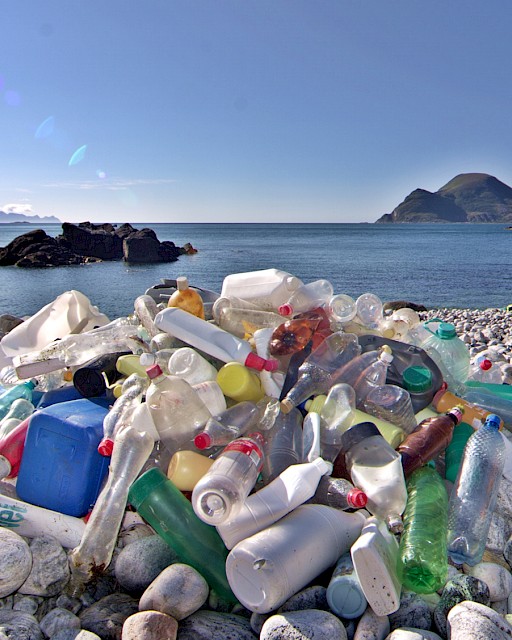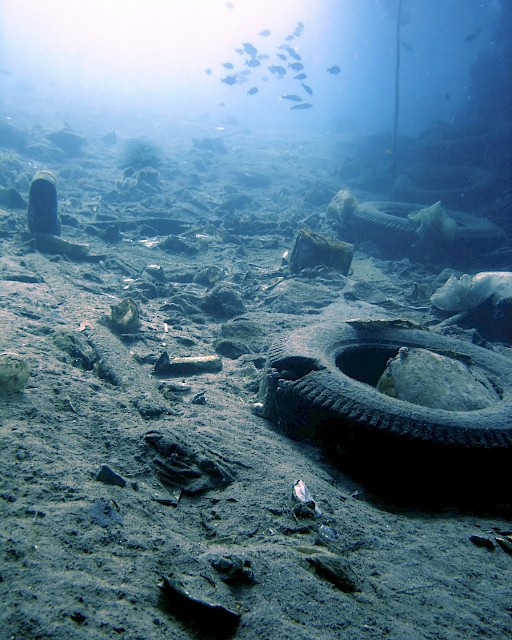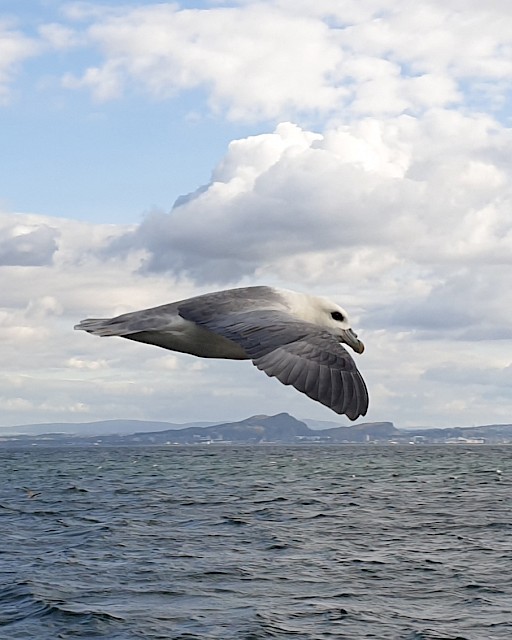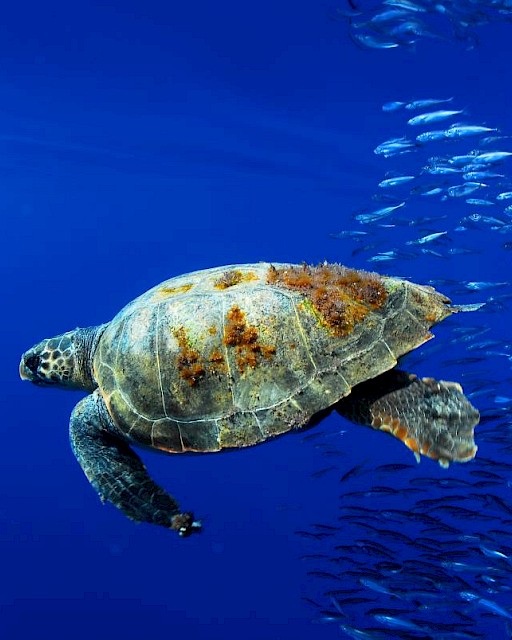Beach litter
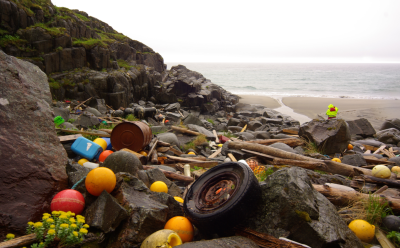 One of the key indicators of abundance, composition and trends of litter in the marine environment is the amount on beaches. OSPAR monitors litter on 100m stretches at over 70 beaches in the North-East Atlantic following common monitoring guidelines. The monitoring records litter in 112 predefined litter items in 11 types: Plastic / polystyrene, Metal, Paper and cardboard, Wood, Sanitary waste, Cloth, Rubber, Glass, Pottery/ceramics, Medical waste and Faeces.
One of the key indicators of abundance, composition and trends of litter in the marine environment is the amount on beaches. OSPAR monitors litter on 100m stretches at over 70 beaches in the North-East Atlantic following common monitoring guidelines. The monitoring records litter in 112 predefined litter items in 11 types: Plastic / polystyrene, Metal, Paper and cardboard, Wood, Sanitary waste, Cloth, Rubber, Glass, Pottery/ceramics, Medical waste and Faeces.
The most recent assessment of beach litter monitoring data was published in 2022 and showed that beach litter levels remain high with plastic items predominating. Over the last six years, significant decreases in litter and plastic abundance have been observed at the OSPAR Maritime Area scale and in four OSPAR Regions. To substantially reduce marine litter, it is necessary to continue current efforts and take additional measures.
The large numbers of litter items are considered harmful due to the potential threat of entanglement, ingestion or injury, and indicate that litter pollution is also a problem for marine life in the OSPAR Maritime Area.
Data, maps and legends available here
THRESHOLD VALUES
The OSPAR threshold value for beach litter, of 20 litter items per 100 meters of coastline, was agreed in 2023. This corresponds with the beach litter threshold value agreed by the European Union. The rationale for the EU’s threshold value is set out in a technical report from the Joint Research Centre, A European Threshold Value and Assessment Method for Macro Litter on Coastlines (2020), prepared by the MSFD Technical Group on Marine Litter (TG ML). It was concluded by TG ML that a threshold value cannot be based on quantitative ecological and socio-economic harm due to a lack of scientific data on harm caused by marine litter on beaches. The proposed EU threshold was based instead on the 15th percentile value of the 2015-16 EU baseline data set. The value was considered by experts from TG ML to reduce harm from beach litter to a sufficiently precautionary level.
The median beach litter total count in the OSPAR Area over the period from 2018 to 2020 is 252 items/100 m. OSPAR has agreed ambitious targets to reduce commonly found single-use plastic items and maritime-related plastic items on beaches by 50% by 2025 and by 75% by 2030, compared to a 2016 baseline.
Country specific beach litter factsheets for MSFD reporting
In addition to fact sheets presenting results at the OSPAR Area and Regions scales that were prepared for OSPAR's Quality Status Report 2023, fact sheets at the MSFD country-subregions scale were also prepared to help countries in their national reporting for MSFD and the evaluation of national measures. These fact sheets have the same content that OSPAR Regions ones except that they also include an assessment of the EU Threshold Value.
OSPAR Median Total Counts of Beach Litter Items per Survey Site over the period 2018 - 2020 :

